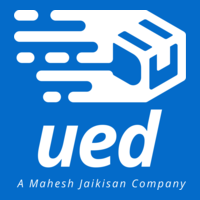Bio-ethanol Production Plant
Bioethanol plant engineering consultancy includes conducting feasibility studies and preparing conceptual designs to define project requirements and ensure technical and financial viability.
Features
What we do
- Utilities Engineering
- Process Engineering
- Mechanical Engineering
- Material Engineering
- Chemical Engineering
- Agriculture Processing

Engineering Consultancy Services for Bioethanol Production Plant
1. Introduction UED is pleased to present Engineering Consultancy Services for the design and development of a Bioethanol Production Unit . As a renewable energy source, bioethanol is gaining global prominence due to its environmental benefits and its role in reducing fossil fuel dependency. With expertise in industrial process optimization and sustainability integration, we aim to deliver a high-efficiency plant capable of producing bioethanol from various feedstocks such as sugarcane, molasses, corn, or lignocellulosic biomass.
It involves detailed engineering for process, mechanical, electrical, and civil aspects, ensuring optimized design and seamless integration. The consultancy also supports procurement by specifying equipment, evaluating vendors, and assisting in the procurement process. Additionally, it oversees project management activities, including construction, installation, testing, and commissioning, to ensure the plant operates efficiently while complying with industry standards, safety regulations, and environmental requirements.
2. Project Objectives
Sustainable Production: Develop an efficient production facility that minimizes resource consumption and environmental impact.
Feedstock Optimization: Design a process tailored to the client’s available feedstock, ensuring maximum yield and cost-effectiveness.
High-Purity Output: Ensure production of fuel-grade bioethanol (>99.5% purity) meeting regulatory standards.
Energy Efficiency: Incorporate energy recovery systems to enhance operational efficiency.
Compliance and Scalability: Ensure compliance with environmental and safety regulations while providing scalability for future expansion.
3. Scope of Engineering Consultancy Services
3.1. Feasibility & Preliminary Design
Feasibility Study:
Analysis of feedstock availability and logistics.
Evaluation of production capacity based on market demand.
CAPEX and OPEX estimation along with ROI analysis.
Feedstock Suitability Analysis:
Detailed assessment of feedstock (e.g., sugarcane, molasses, corn, agricultural residues) for process adaptation.
Preliminary Plant Layout:
Design the layout to include key production units like fermentation, distillation, dehydration, and utilities.
3.2. Detailed Engineering Design
Process Flow Design:
Develop a comprehensive Process Flow Diagram (PFD) outlining all stages:
Feedstock Pre-treatment: Preparation and hydrolysis of raw materials.
Fermentation: Conversion of sugars to ethanol using yeast or enzymes.
Distillation: Separation of ethanol from the fermentation broth.
Dehydration: Removal of residual water to produce anhydrous ethanol.
Piping and Instrumentation Design (P&ID):
Detailed design to ensure efficient material and energy flow with proper instrumentation for monitoring.
Utility Integration:
Design systems for steam generation, cooling, power, and water recycling.
By-Product Management:
Develop solutions for handling by-products like CO₂ and vinasse, including potential commercial applications.
3.3. Procurement & Vendor Coordination
Equipment Specification and Selection:
Define specifications for key equipment such as fermenters, distillation columns, molecular sieves, and heat exchangers.
Evaluate and recommend vendors for procurement.
Vendor Support:
Assist in technical evaluations and contract negotiations with vendors.
3.4. Construction & Installation
Construction Supervision:
Oversee civil and mechanical construction activities to ensure compliance with design and timelines.
Equipment Installation:
Supervise installation and alignment of all critical machinery.
Utility Setup:
Oversee the integration of utilities such as power, water, and steam systems.
3.5. Commissioning & Optimization
System Integration and Testing:
Conduct trials to ensure systems meet design parameters and process specifications.
Operator Training:
Provide training in equipment operation, process monitoring, and safety protocols.
Process Optimization:
Fine-tune process parameters to achieve maximum efficiency and yield.
4. Project Timeline
Phase | Duration | Key Activities & Deliverables |
|---|---|---|
Feasibility & Preliminary Design | 6-8 weeks | Feasibility study, feedstock analysis, initial layout. |
Detailed Engineering Design | 8-10 weeks | Process design, PFD, P&ID, equipment specifications. |
Procurement & Vendor Coordination | 6-8 weeks | Vendor selection, technical evaluations, procurement plans. |
Construction & Installation | 12-16 weeks | Construction monitoring, equipment setup, utilities. |
Commissioning & Optimization | 4-6 weeks | System testing, operator training, and process fine-tuning. |
5. Deliverables
Feasibility report with feedstock analysis and market study.
Detailed engineering designs including PFDs, P&IDs, and utility layouts.
Equipment specifications and vendor recommendations.
On-site supervision reports during construction and installation.
Commissioning and optimization reports.
Training manuals and operational guidelines.
Compliance and sustainability documentation.
6. Cost & Payment Terms
The consultancy fee will be based on the project’s scale and complexity. Payment milestones include:
Initial Payment: 30% upon signing the contract.
Progress Payment: 40% after completion of the design and procurement phases.
Final Payment: 30% upon successful commissioning and handover.
7. Conclusion
Avconexpo is dedicated to providing a cutting-edge bioethanol production unit tailored to your specific requirements. By leveraging innovative technology and sustainable practices, we aim to create a facility that meets both operational goals and environmental standards. We look forward to collaborating with this exciting venture.
Research Results
Download.pdf

